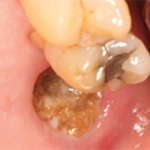 NEW YORK (Reuters Health)—Long-term glucocorticoid users see greater gains in spine bone-mineral density when treated with the monoclonal antibody denosumab vs. oral alendronate, a small clinical trial shows.
NEW YORK (Reuters Health)—Long-term glucocorticoid users see greater gains in spine bone-mineral density when treated with the monoclonal antibody denosumab vs. oral alendronate, a small clinical trial shows.
The drug also proved superior at lowering bone-turnover markers at 12 months, researchers in Hong Kong report in Bone.1
“Denosumab may be considered as an alternative first-line therapy in higher risk patients using chronic glucocorticoids and in those who are contraindicated for or intolerant to” bisphosphonates, Dr. Chi Chiu Mok of Tuen Mun Hospital and colleagues write.
“The strength of our study is that this is not a commercially sponsored trial,” he tells Reuters Health by email. “The weakness, of course, is the relatively short follow-up time and the sample size from one center. Yet, we feel that it is important to have data in purely Asian patients.”
Previous randomized controlled trials have shown denosumab to be superior to bisphosphonates in postmenopausal women, but there is a lack of data from long-term steroid users, particularly Asians, the researchers note.
To investigate, they recruited 139 patients who were receiving long-term prednisolone therapy (at least 2.5 mg/day for at least one year) to a year-long study. All of the patients, 96% of whom were women, were being treated for autoimmune inflammatory diseases as outpatients at Tuen Mun clinics.
Half were randomly assigned to receive denosumab injections (60 mg every six months) and half to receive oral alendronate (70 mg per week). The alendronate group had a higher number of chronic smokers, but there were no other significant differences between the groups.
The patients’ mean age was 50 years and their mean BMI was 23 kg/m2. At the start of the study, they had been taking prednisolone for a mean of 107 months at a mean daily dose of 5.1 mg.
The majority of the patients (59%) had never been previously treated for osteoporosis, whereas the rest had been taking oral bisphosphonates. With one exception, all the patients were ethnic Chinese.
After 12 months, gains in bone-mineral density (BMD) at the lumbar spine favored denosumab-treated patients (3.5% vs. 2.5%), with significantly higher BMD after adjusting for baseline BMD values, age, sex, osteoporosis risk factors and cumulative prednisolone doses received in one year (P=0.045).
Differences in hip and femoral-neck BMD were not statistically significant between the groups.
Denosumab-treated patients showed significantly greater drops in the levels of serum P1NP (53% vs. 22%) and beta-CTX (57% vs. 5.3%) at the 12-month point.
“All scientists in ‘bone world’ know that denosumab can increase BMD to a larger extent compared to bisphosphonates (e.g., alendronate),” says Dr. Giovanni Adami, a rheumatologist at the University of Verona, Italy, who was not involved in the research.
“The value of Dr. Mok’s study,” Dr. Adami tells Reuters Health by email, “is providing new evidence that denosumab can suppress bone-turnover markers better than alendronate even in long-term glucocorticoid users.”
Kenneth Saag , MD, MSc, of the University of Alabama at Birmingham, who previously led an industry-funded trial showing that denosumab was superior to risedronate, described the new research as “confirmatory” of his own group’s findings.2
“It is good to have choices,” Dr. Saag tells Reuters Health by email. “The mechanisms of how these drugs work and how they are delivered is slightly different.”
Dr. Mok and colleagues conclude that randomized controlled trials “of large sample size and longer follow-up are needed to address the issue of anti-fracture efficacy and long-term safety of denosumab in the treatment of glucocorticoid-induced osteoporosis.”
References
- Mok CC, Ho LY, Leung SMT, et al. Denosumab versus alendronate in long-term glucocorticoid users: A 12-month randomized controlled trial. Bone. 2021 Feb 23;146:115902. Online ahead of print.
- Saag KG, Pannacciulli N, Geusens P, et al. Denosumab versus risedronate in glucocorticoid-induced osteoporosis: Final results of a twenty-four month randomized, double-blind, double-dummy trial. Arthritis Rheumatol. 2019 Jul;71(7):1174–1184. Epub 2019 May 25.
